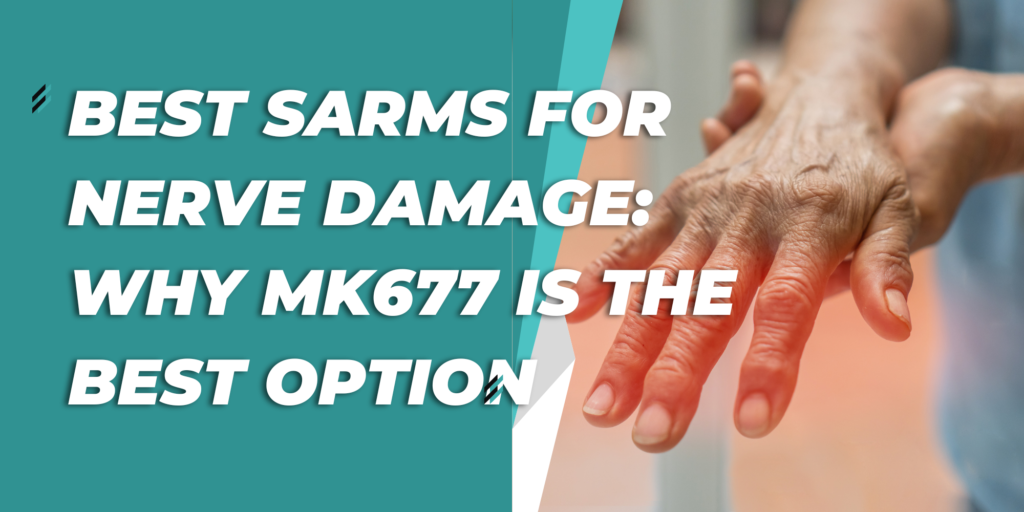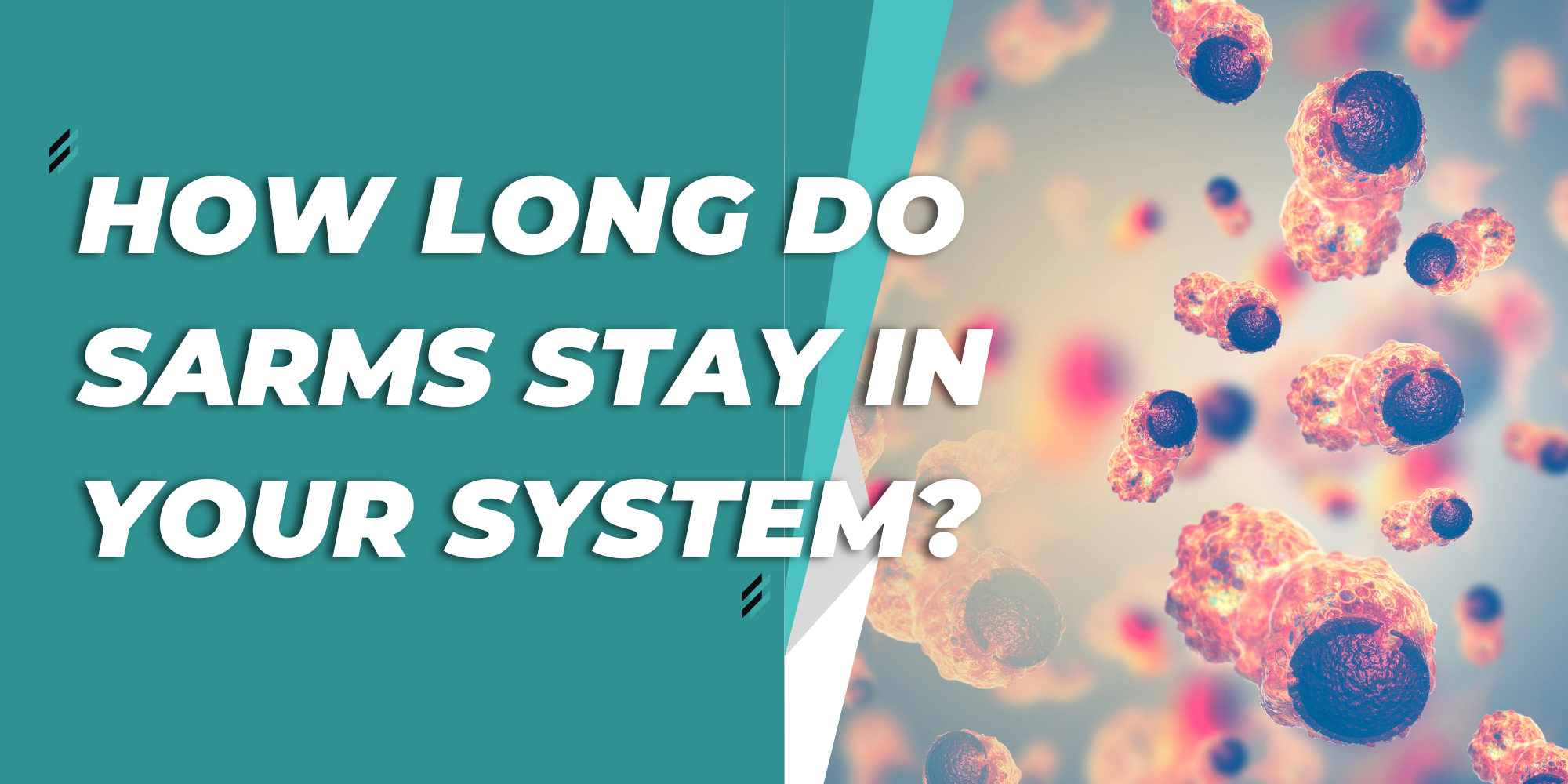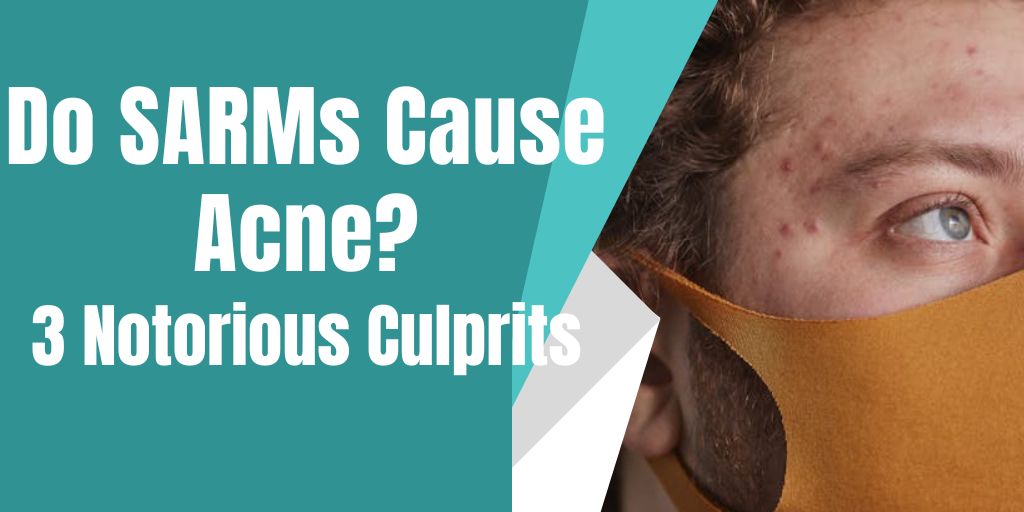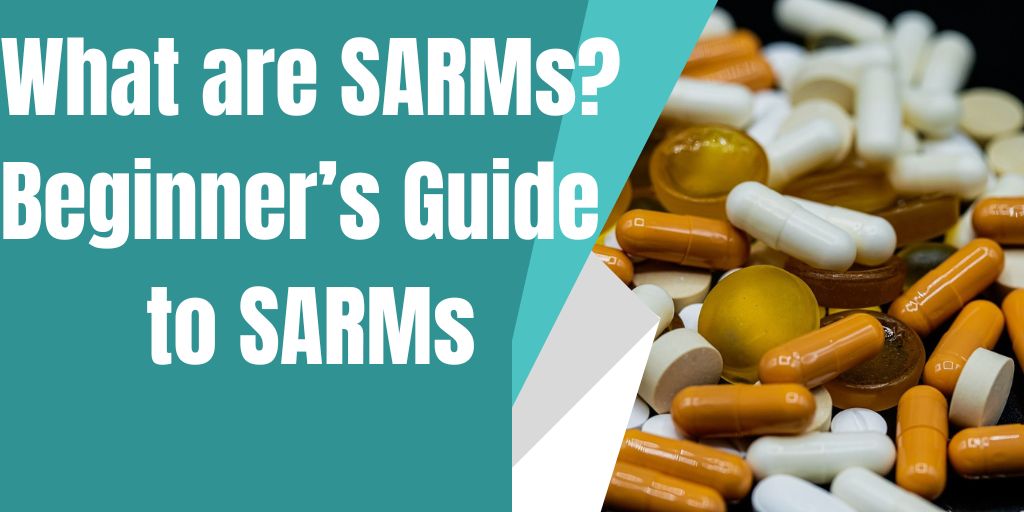
If you are looking for the best SARMs for nerve damage, chances are you’re a fitness enthusiast already familiar with SARMs. However, if you still don’t know what SARMs (or selective androgen receptor modulators) are, I invite you to take a quick look at our simplified guide on SARMs after this.
Now, I’ll be the first to admit that SARMs are not exactly popular for nerve damage repair. Honestly, there are better options out there. For example, I’ve seen a lot of guys say great things about BPC157 for this purpose. I always want to keep it 100 with you guys, so that’s the first thing you must know.
Still, I understand how some people would want to use SARMs for this purpose because they also want the muscle-building benefits of these compounds. If that’s you, then you’ll be interested in this list. In particular, you’ll be interested in Ibutamoren Mk677 and what it can do to repair your damaged nerves.
TL;DR
In this section, I want to give you the gist of this article if you don’t have the time or patience to read the whole thing. So here are the answers you need.
- There are three SARMs that may be able to support nerve damage repair; Ibutamoren, Ligandrol, and Ostarine.
- Of the three options, Ibutamoren MK677 is your best bet because it boosts the production of growth hormone (GH). You can check the best price of Ibutamoren here.
- The other two SARMs are Ligandrol LGD4033 and Ostarine MK2866. These have an indirect impact that could promote nerve damage recovery.
Let’s now get back to the article. Here is the breakdown of the best SARMs for nerve damage.
1. Ibutamoren MK677
Ibutamoren, also known as MK-677, has already made a name for itself in the anti-aging niche. However, its remarkable benefits don’t end there. This compound developed by Merck Pharmaceuticals has now stepped into the spotlight for its potential to assist with nerve damage repair.
Let’s unravel the mystery behind Ibutamoren’s nerve-healing properties, additional benefits, potential side effects, and usage guidelines.
Ibutamoren and Nerve Damage: A Healing Hand
Ibutamoren’s primary mechanism of action involves stimulating the secretion of growth hormone (GH) and insulin-like growth factor 1 (IGF-1). These hormones play significant roles in cell regeneration and growth, which are crucial for repairing damaged nerves.
By boosting the production of GH and IGF-1, Ibutamoren fosters an environment conducive to nerve repair. It helps those who suffer from nerve damage experience relief and, in some cases, regain lost function.
Additional Benefits of Ibutamoren
Beyond its potential for nerve damage repair, Ibutamoren offers other notable benefits, such as increased lean muscle mass, improved bone density, and enhanced sleep quality.
Better sleep is particularly important for those dealing with nerve damage, as it allows the body time to recuperate and promotes overall healing. It’s also reportedly a good SARM for height growth, especially among teens who are still growing.
Potential Side Effects: Staying Informed
While Ibutamoren’s nerve-healing properties are promising, it’s essential to be aware of potential side effects.
Some users may experience mild side effects like increased appetite, temporary bloating, and mild lethargy. These side effects are generally manageable and tend to subside as the body adapts.
As always, it’s important to monitor your body’s response and consult a health care professional if you have any concerns.
Dosage and Cycle Guidelines
Adhering to proper dosage and cycle guidelines is crucial when using Ibutamoren to support nerve damage repair.
A typical dose ranges from 10-25 mg per day, with most users finding success at around 20 mg. As for cycle length, it’s recommended to run Ibutamoren for 12-16 weeks, followed by a break of equal duration. This ensures your body has time to adjust and recover, paving the way for optimal nerve healing.
2. Ligandrol LGD4033
Ligandrol, also known as LGD-4033, is a popular SARM initially developed by Ligand Pharmaceuticals. Although it’s primarily known for promoting muscle growth, Ligandrol has recently gained attention for its potential to support nerve damage repair.
Ligandrol and Nerve Damage: Fortifying Your Neural Network
Ligandrol’s ability to support peripheral nerve injury repair might be attributed to its capacity to enhance muscle growth and preserve lean body mass. By strengthening the muscles surrounding damaged nerves,
Ligandrol indirectly aids in reducing stress on the affected nerves and supports their recovery. This muscle-nerve synergy can help alleviate discomfort and improve overall functionality for individuals dealing with nerve damage.
Additional Benefits of Ligandrol
Apart from its nerve-strengthening potential, Ligandrol boasts a myriad of other benefits. It’s known to increase lean muscle tissue, improve bone density, and boost overall strength.
These advantages contribute to a more robust and resilient body, better equipped to handle the challenges that come with nerve damage.
Potential Side Effects: Staying Vigilant
Some users have reported mild side effects such as headaches, fatigue, and decreased testosterone levels. These side effects are typically short-lived and manageable.
However, it’s essential to pay close attention to how your body reacts and seek medical advice if any persistent or concerning side effects occur.
Dosage and Cycle Guidelines
To harness the full potential of Ligandrol for nerve damage repair, it’s vital to follow proper dosage and cycle guidelines.
A common dose ranges from 5-10 mg per day, with most users finding success around 5-7 mg. Cycle lengths typically fall between 8-12 weeks, followed by a break to allow your body time to reset and recover.
As with any supplement, consulting a healthcare professional before incorporating Ligandrol into your nerve repair regimen is always a prudent decision.
3. Ostarine MK2866
Ostarine, also known as MK-2866 or Enobosarm, has already established itself as a formidable SARM for muscle building among beginners. Now, this versatile compound developed by GTx Inc. is taking on a new role – supporting nerve damage repair.
Ostarine and Nerve Damage: A Helping Hand for Healing
Ostarine’s role in nerve damage repair can be attributed to its capacity to promote lean muscle mass and improve bone density.
By enhancing muscle and bone strength, Ostarine indirectly supports nerve recovery by reducing pressure on the affected nerves and providing a more stable environment for healing. As a result, individuals with nerve damage may experience reduced discomfort and improved overall function.
Additional Benefits of Ostarine
Apart from its nerve-supporting properties, Ostarine offers an array of other benefits. It is known to increase skeletal muscle mass, improve bone density, and speed up recovery.
These advantages contribute to a stronger and healthier body, better equipped to handle the challenges associated with nerve damage.
Potential Side Effects: Keeping an Eye Out
While Ostarine is generally well-tolerated, it’s essential to be aware of potential side effects. Some users have reported mild headaches, nausea, and occasional lethargy.
These side effects are typically short-lived and can be managed by adjusting the dosage or allowing the body time to adapt. It’s crucial to listen to your body and seek medical advice if you experience any persistent or concerning side effects.
Dosage and Cycle Guidelines
A typical dose ranges from 10-30 mg per day, with most users finding success around 20-25 mg. Recommended cycle lengths are between 8-12 weeks, followed by a break to allow your body to recover and maintain hormonal balance.
Best SARMs for Nerve Damage FAQs
1. Do SARMs affect Nerves?
SARMs, and especially Ibutamoren Mk677, are known to repair nerve damage. It positively affects the damaged nerves supporting the repair and regeneration of the nerve fibers.
2. What SARM helps heal injuries?
The SARM that helps heal injuries is Ibutamoren Mk677. That’s because Ibutamoren stimulates human growth hormone (HGH) and Insulin-like growth factor (IGF1), both of which are required for tissue regeneration and growth.
Wrapping Up
As we conclude this exploration of the best SARMs for nerve damage repair, it’s evident that Ibutamoren, Ligandrol, and Ostarine each offer unique and valuable benefits.
While all three compounds contribute to the healing process, Ibutamoren stands out as the frontrunner in directly promoting nerve repair through its stimulation of growth hormone and IGF-1 secretion. Ibutamoren Mk677 is hence the obvious option.
Ligandrol and Ostarine, on the other hand, provide indirect support by fostering a stronger, more resilient body.
Ultimately, the choice of which SARM to incorporate into your nerve damage repair regimen will depend on your individual needs and preferences. Remember to consult a healthcare professional before embarking on this journey to ensure the safest and most effective approach.






